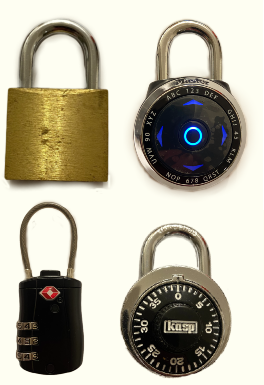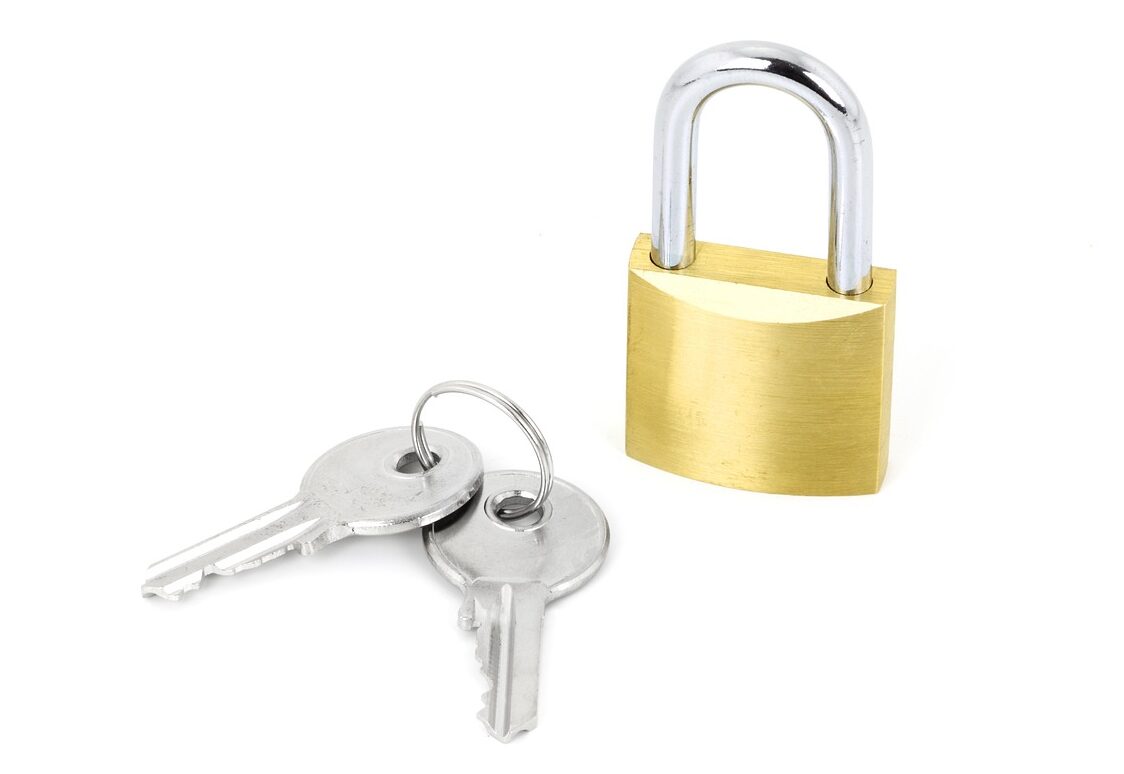Padlocks in a treasure hunt
Padlocks come in a great many varieties, and are a fantastic way to add an interactive element into your treasure hunt.
Treasure hunt clues using padlocks
Treasure chest
In most treasure hunts the prize is usually hidden, but if you have a box that you can lock it is very exciting for the hunters to discover (or even be given) the prize in a locked box and be told they have to solve the clues to open it. Simple cardboard box with a padlock through the opening creates a great little treasure chest. The hunters could easily cut it open with a pair of scissors, but in the spirit of the game no-one will. Have a look around and see what you can use as a treasure chest – you’d be surprised what items have lids with holes for a padlock:
- toolboxes
- outdoor storage boxes and sheds (a big box!)
- jewellery boxes
- toy boxes
- rucksacks
- luggage bags
Locked doors
You can build a treasure hunt spread over several rooms with doors that need unlocking to advance to the next clue. Double doors with handles in the middle can be locked using a chain bike lock. Doors can be held shut by using string: it can only be done from the side of the door that opens outwards. You essentially tie one end of the string around the door handle and the other end around something on the other side of the room (ideally something that doesn’t move). The string should be tight enough to prevent the door from opening. Now cut the string, tie loops into the cut ends, and then padlock them together. The hunters must now unlock the padlock to release the string, which will allow the door to open.
Locked card
If you have two padlocks, but no box, you could create a Locked Card clue.
Types of Padlock

Standard padlocks
The standard padlock is excellent for locking away an element of a clue, requiring the hunters to use other clues to locate the key. The most practical padlocks for this are ones with a long shackle.
Combination locks
These are a lot of fun because there can be all sorts of clues that lead to the code needed to open the padlock. How about the weight of specific objects hunters have to collect? Or answering a riddle and converting letters to numbers? You can even just give the numbers to the hunters at the start of the hunt without explaining what they are for, and then when they find the combination lock only then will they realise their significance.
Single Dial Padlocks
Single dial padlocks are great because they feel like you’re cracking a safe. They can be quite fiddly though, so if you do use them make sure the instructions are clear. For example: Turn right two turns, stop at __. Turn left a full turn back past that first number, stop at__. Turn right and stop at __. Pull shackle open.
Electronic Padlocks
These padlocks contain batteries and have buttons, and require you to press the buttons in the right order for the mechanism to automatically release. The buttons are often labelled with letters and numbers, so the code to unlock it could be a word or phrase. These padlocks are very versatile – I love mine.
Fingerprint Padlocks
Very cool, but probably impractical for a treasure hunt. A fingerprint is used to unlock them, but they have to be configured to recognise the fingerprint first. Also, there is no clever clue required to open it – the hunters just use their finger. It’d be like having a normal lock with the key right next to it.
Padlocks with Bluetooth
These are Bluetooth enabled so that you can use your smartphone to unlock them, or if your smartphone is in range they will unlock by pressing the button. There isn’t much intrigue to unlocking them, and they can be unreliable. If you’re building a treasure hunt around a phone they might be a great addition though, requiring the hunter to unlock the phone before they can unlock the padlock.
